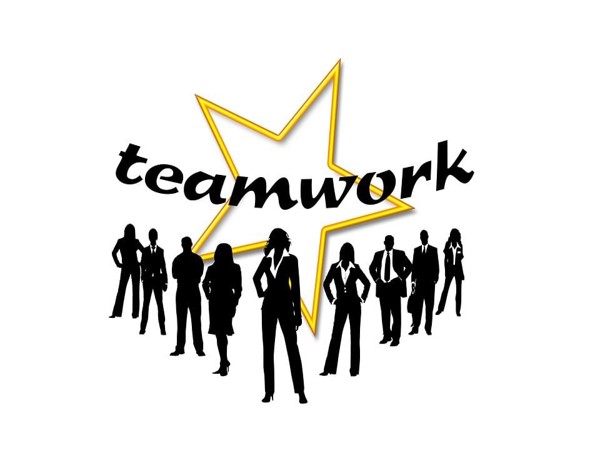Building a strong team is essential for the success of any business. A cohesive, motivated, and skilled team can drive your business forward, overcome challenges, and contribute to long-term growth. Here’s a step-by-step guide on how to assemble a team that will help your business thrive.
1. Define Your Needs
The first step in building a strong team is to clearly define what roles you need to fill and what skills are required for each position. Understanding your business goals and current gaps will help you recruit the right talent.
Step-by-Step Solution:
- Step 1: Identify the key roles and responsibilities necessary for achieving your business objectives. Consider roles in management, operations, sales, marketing, and any other critical functions.
- Step 2: Develop detailed job descriptions that outline the skills, qualifications, and experience required for each role.
- Step 3: Determine the number of team members needed for each role and the ideal team structure to support your business operations.
Example: If you run a tech startup, you might need software developers, a product manager, a marketing specialist, and a customer support representative. Define each role’s responsibilities and required skills to ensure you attract the right candidates.
2. Recruit Talent Effectively
Once you’ve defined your needs, the next step is to recruit talent. Effective recruitment involves finding candidates who not only have the right skills but also fit well with your company culture.
Step-by-Step Solution:
- Step 1: Utilize various recruitment channels, such as job boards, social media, and professional networks, to reach a wide pool of candidates.
- Step 2: Screen resumes and applications to shortlist candidates who meet your criteria.
- Step 3: Conduct thorough interviews and assessments to evaluate candidates’ skills, experience, and cultural fit.
Example: For a small business in Nigeria, you might use platforms like Jobberman or LinkedIn to post job openings and find suitable candidates. Consider including practical tests or tasks relevant to the role to assess their abilities effectively.
3. Foster a Positive Work Environment
A positive work environment boosts employee morale, productivity, and retention. Creating an environment where team members feel valued and supported is crucial for team cohesion.
Step-by-Step Solution:
- Step 1: Develop a company culture that promotes respect, collaboration, and open communication.
- Step 2: Implement policies and practices that support work-life balance, professional development, and employee well-being.
- Step 3: Encourage regular feedback and recognition to maintain high levels of engagement and satisfaction.
Example: For a marketing agency, you might host regular team-building events, provide opportunities for skill development, and celebrate team achievements to create a supportive and motivating work environment.
4. Provide Clear Leadership and Direction
Strong leadership is essential for guiding your team and achieving business goals. Effective leaders provide direction, set expectations, and support their team members.
Step-by-Step Solution:
- Step 1: Establish clear goals and objectives for the team, ensuring everyone understands their roles and responsibilities.
- Step 2: Communicate regularly with your team to provide updates, address concerns, and offer guidance.
- Step 3: Lead by example, demonstrating the values and work ethic you expect from your team.
Example: As the founder of a new e-commerce business, you might set specific sales targets, provide regular updates on business performance, and lead strategy meetings to ensure your team stays aligned with your vision.
5. Encourage Collaboration and Innovation
Encouraging collaboration and innovation helps your team work together effectively and generate creative solutions to challenges. Fostering a collaborative environment can enhance problem-solving and drive business success.
Step-by-Step Solution:
- Step 1: Create opportunities for team members to collaborate on projects and share ideas. This can include brainstorming sessions, team meetings, and collaborative tools.
- Step 2: Promote a culture of innovation by encouraging experimentation and rewarding creative thinking.
- Step 3: Provide the necessary tools and resources to facilitate collaboration and streamline communication.
Example: In a tech startup, you might use collaboration tools like Slack or Microsoft Teams to facilitate communication and project management. Encourage team members to participate in innovation workshops or hackathons to generate new ideas.
6. Offer Training and Development Opportunities
Investing in your team’s development is crucial for their growth and the overall success of your business. Providing training and development opportunities helps employees enhance their skills and stay motivated.
Step-by-Step Solution:
- Step 1: Identify areas where team members would benefit from additional training or development.
- Step 2: Offer relevant training programs, workshops, or courses to help employees build their skills.
- Step 3: Support continuous learning by encouraging employees to pursue professional certifications or attend industry events.
Example: For a financial services firm, you might offer training in financial analysis, regulatory compliance, or customer service skills to help your team stay updated and excel in their roles.
7. Implement Effective Performance Management
Performance management involves setting clear expectations, providing regular feedback, and addressing performance issues. Effective performance management helps ensure that team members are meeting their goals and contributing to the success of the business.
Step-by-Step Solution:
- Step 1: Set clear performance goals and objectives for each team member.
- Step 2: Conduct regular performance reviews to provide feedback and discuss progress.
- Step 3: Address any performance issues promptly and provide support or additional training as needed.
Example: If you manage a sales team, set specific sales targets for each member and review their performance quarterly. Provide feedback and support to help them achieve their goals and address any challenges they may face.
8. Build a Strong Company Culture
A strong company culture attracts and retains top talent and fosters a sense of belonging among team members. Building a positive culture involves aligning values, practices, and behaviors with your business goals.
Step-by-Step Solution:
- Step 1: Define the core values and principles that represent your company culture.
- Step 2: Integrate these values into your hiring practices, employee policies, and daily operations.
- Step 3: Promote and reinforce your company culture through leadership, communication, and employee engagement initiatives.
Example: If you run a creative agency, emphasize values like creativity, collaboration, and innovation in your company culture. Host regular creative workshops and encourage open communication to reinforce these values.
9. Recognize and Reward Contributions
Recognizing and rewarding employee contributions can boost morale, increase motivation, and reinforce positive behavior. Acknowledging achievements helps employees feel valued and encourages continued high performance.
Step-by-Step Solution:
- Step 1: Develop a recognition and reward system that aligns with your company’s culture and goals.
- Step 2: Offer both formal and informal recognition, such as awards, bonuses, or public praise.
- Step 3: Ensure that recognition is timely, specific, and meaningful to the recipient.
Example: For a customer service team, consider implementing an employee of the month program, where outstanding performance is recognized and rewarded with a certificate, gift card, or additional time off.
10. Adapt and Evolve
As your business grows, your team’s needs and dynamics may change. Being adaptable and open to evolving your team structure and practices is essential for continued success.
Step-by-Step Solution:
- Step 1: Regularly assess your team’s performance, needs, and goals to identify areas for improvement or adjustment.
- Step 2: Be open to feedback from team members and adjust team practices or structures as needed.
- Step 3: Stay informed about industry trends and best practices to ensure your team remains competitive and effective.
Example: If your tech startup expands into new markets, you may need to adjust your team structure to include specialists in those regions or implement new processes to support growth.
Conclusion
Building a strong team involves defining your needs, recruiting effectively, fostering a positive work environment, and providing clear leadership. By encouraging collaboration, investing in development, and recognizing contributions, you can create a team that drives your business forward. Adapt and evolve as needed to ensure your team remains aligned with your business goals and continues to contribute to your success.

.jpg)








